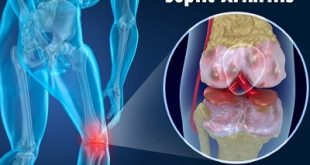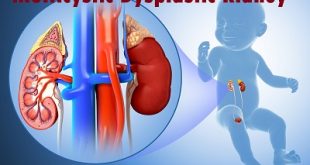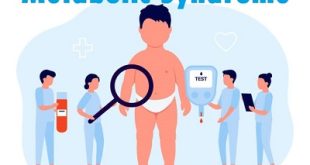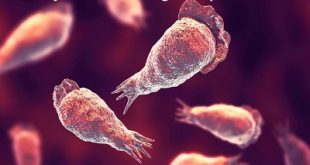What is Meningococcal Disease?
Meningococcal disease is any type of infection that’s caused by the bacteria Neisseria meningitidis, which is also called meningococcus. The bacteria can infect the meninges and the blood. These infections can be serious, even fatal. They’re called meningococcal meningitis and meningococcal septicemia.
The word “meninges” means the three membranes that cover your central nervous system, which is made up of your spinal cord and brain. Membranes are thin layers of tissue that provide protection for the content of the tissues. (Think of how oranges and grapefruits are sectioned off.) Technically, the largest membrane is our skin.
The three meninges are pia mater, arachnoid and dura mater.
What is the difference between Meningococcal Disease and meningitis?
Meningococcal disease is caused by one specific type of bacteria. Meningitis is a term that refers to the inflammation of the meninges. Meningitis can happen in meningococcal disease, but not all cases of meningitis are caused by the germ that causes meningococcal disease.
Pathophysiology of Meningococcal Disease
Meningococci can asymptomatically colonize the nasopharynx (carrier state). Despite documented high rates of colonization (5 to 40% of healthy people), which may be transient, brief, or prolonged, transition to invasive disease is rare (< 1%). A combination of factors is probably responsible for transition from carrier state to invasive disease, which occurs primarily in previously uninfected patients. Carriers (and infected patients) may transmit the organism to people who have direct contact with respiratory secretions or who inhale large-droplet nuclei from a carrier or patient. Nasopharyngeal carriage rates are highest in adolescents and young adults, who serve as reservoirs for transmission of N. meningitidis. Carrier rates rise dramatically during epidemics.
After invading the body, N. meningitidis causes meningitis and severe bacteremia in children and adults, resulting in profound vascular effects. Infection can rapidly become fulminant. The case-fatality rate is 4 to 6% for meningitis alone, compared with up to 40% for meningococcemia with septic shock.
What causes Meningococcal Disease?
The most common types of meningococcal bacteria are called B, W and Y. These bacteria live in the nose or throat, and can be spread through coughing, sneezing, sharing eating and drinking utensils and kissing.
It is not easy to pass the bacteria on, because they cannot survive outside the human body for long periods of time. The only way they are passed from person to person is if you live in the same house or have intimate contact, like deep kissing.
Risk Factors
Anyone can get meningococcal disease but certain people are at increased risk, including:
- Infants younger than 1 year old
- Adolescents and young adults age 16 through 23 years old
- College students who live in residence halls
- People with certain medical conditions that affect the immune system such as HIV
- Microbiologists who routinely work with isolates of Neisseria meningitidis, the bacteria that cause meningococcal disease
- People at risk because of an outbreak in their community
- Individuals traveling to a country where meningococcal disease is epidemic or highly endemic
- Military recruits
What are the symptoms of Meningococcal Disease?
The symptoms of meningococcal disease vary, but include:
- High fever (more than 104°F)
- Headache
- Vomiting
- Stiff neck
- Rash
- Sensitivity to light
- Confusion
- Sleepiness
Symptoms may develop in a few hours, but usually develop over the course of 1 to 2 days.
Often, infants do not have the symptoms listed above. They may be very sleepy, irritable or not eat well. Symptoms such as headache, stiff neck, or fever may not occur, or may be difficult to recognize.
What are the complications?
Ten to fifteen percent of those who get meningococcal disease die. Among survivors, as many as one in five will have permanent disabilities. Complications include:
- Hearing loss
- Brain damage
- Kidney damage
- Limb amputations
How is Meningococcal Disease diagnosed?
Diagnosing meningococcal disease is somewhat difficult because symptoms resemble those of other illnesses, like the flu. Your healthcare provider has to find Neisseria meningitidis bacteria to diagnose this condition. So, your doctor will take blood samples and possibly do a lumbar puncture (spinal tap) to get spinal fluid to test.
These samples will be sent to a laboratory to see if the bacteria can be cultured (grown). Your healthcare provider may order other tests if the cultures aren’t conclusive.
Treatment of Meningococcal Disease
- Antibiotics given by vein (intravenously)
- Fluids given intravenously
- Possibly corticosteroids
People are usually admitted to an intensive care unit and given antibiotics and fluids intravenously as soon as possible, before doctors get the culture results identifying the organism causing the infection.
If meningococci are confirmed, doctors change the antibiotics to those that tests show are most effective against the bacteria, typically ceftriaxone or penicillin. These drugs are given intravenously.
Corticosteroids (such as dexamethasone) may be given to children and adults who have meningitis. These drugs help prevent brain damage.
What is the best way to prevent Meningococcal Disease?
The single best way to prevent this disease is to be vaccinated. Vaccines are available for people 6 weeks of age and older. Various vaccines offer protection against the five major strains of bacteria that cause meningococcal disease:
All teenagers should receive two doses of vaccine against strains A, C, W and Y, also known as MenACWY or MCV4 vaccine. The first dose is given at 11 to 12 years of age, and the second dose (booster) at 16 years.
- It is very important that teens receive the booster dose at age 16 years in order to protect them through the years when they are at greatest risk of meningococcal disease.
Teens and young adults can also be vaccinated against the “B” strain, also known as MenB vaccine. Talk to your healthcare provider about whether they recommend vaccine against the “B” strain.
Others who should receive meningococcal vaccines include:
- Infants, children and adults with certain medical conditions
- People exposed during an outbreak
- Travelers to the “meningitis belt” of sub-Saharan Africa
- Military recruits
Please speak with your healthcare provider if you may be at increased risk.
Meningococcal Vaccine
Meningococcal vaccines protect against specific types (called serogroups) of meningococci that cause most meningococcal disease: serogroups A, B, C, W, and Y.
Two types of meningococcal vaccine are available in the United States:
- MenACWY vaccines: These vaccines protect against meningococcal serogroups A, C, W, and Y. They are part of the routine childhood vaccination schedule and are recommended for all children at age 11 to 12 years, with a booster at age 16 years. These vaccines are also recommended for some infants and for adults who are at increased risk.
- MenB vaccines: These vaccines protect against meningococcal serogroup B, which is a type of meningitis bacteria that has become common in outbreaks among college students. These vaccines are also recommended for people 10 years of age and older who are at increased risk of meningitis caused by serogroup B.
 Diseases Treatments Dictionary This is complete solution to read all diseases treatments Which covers Prevention, Causes, Symptoms, Medical Terms, Drugs, Prescription, Natural Remedies with cures and Treatments. Most of the common diseases were listed in names, split with categories.
Diseases Treatments Dictionary This is complete solution to read all diseases treatments Which covers Prevention, Causes, Symptoms, Medical Terms, Drugs, Prescription, Natural Remedies with cures and Treatments. Most of the common diseases were listed in names, split with categories.








it’s wonderful and I would like to know the references maybe to books.